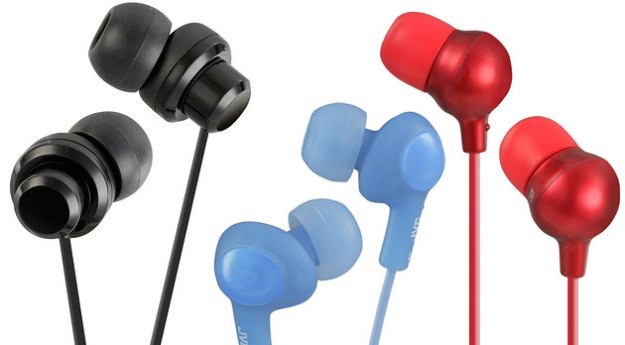
Despite rampant public objection, Apple continues to package some of the most uncomfortable, lame-sounding headphones ever to invade human ears in the box along with its iPod, iPhone and iPad products. With no end to this practice in sight, it is probably best that buyers plan on an add-on headphone purchase for something a little more comfortable. Fortunately, JVC is doing its part to make this a budget-friendly proposition and is now announcing an updated line-up of inexpensive earbuds sure to please style-conscious bargain hunters.
The Riptidz (HA-FX8, far left above) are new for JVC and billed as a sweat-proof, workout friendly in-ear headphone. Three silicone eartip sizes are included and the cable length comes in at 3.3 feet. Now you can sweat to the oldies for $9.99.

The Marshmallow (HA-FX30, far right above) kept their fluffy “memory foam” eartips but now feature the expanded color options, longer 3.9-foot cable and a larger 11.5mm driver (up from 8.5mm). The Marshmallow headphones can still be had for $14.95.
The Marshmallow Remote + Mic (HA-FR36, right) is also new for JVC this year. Take the new Marshmallow, add in a one-button remote and built-in microphone and you have a fully functioning replacement that should be far more comfortable than what Apple puts in the box. This model works for Blackberry, too and can be had for $19.95.



